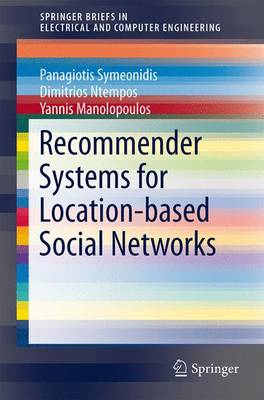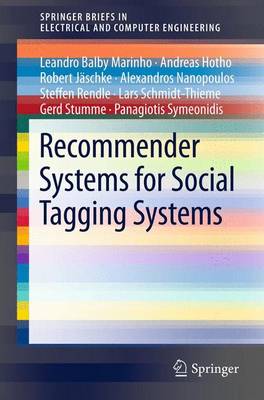SpringerBriefs in Electrical and Computer Engineering
2 total works
Recommender Systems for Location-based Social Networks
by Panagiotis Symeonidis, Dimitrios Ntempos, and Yannis Manolopoulos
Online social networks collect information from users' social contacts and their daily interactions (co-tagging of photos, co-rating of products etc.) to provide them with recommendations of new products or friends. Lately, technological progressions in mobile devices (i.e. smart phones) enabled the incorporation of geo-location data in the traditional web-based online social networks, bringing the new era of Social and Mobile Web. The goal of this book is to bring together important research in a new family of recommender systems aimed at serving Location-based Social Networks (LBSNs). The chapters introduce a wide variety of recent approaches, from the most basic to the state-of-the-art, for providing recommendations in LBSNs.
The book is organized into three parts. Part 1 provides introductory material on recommender systems, online social networks and LBSNs. Part 2 presents a wide variety of recommendation algorithms, ranging from basic to cutting edge, as well as a comparison of the characteristics of these recommender systems. Part 3 provides a step-by-step case study on the technical aspects of deploying and evaluating a real-world LBSN, which provides location, activity and friend recommendations. The material covered in the book is intended for graduate students, teachers, researchers, and practitioners in the areas of web data mining, information retrieval, and machine learning.

